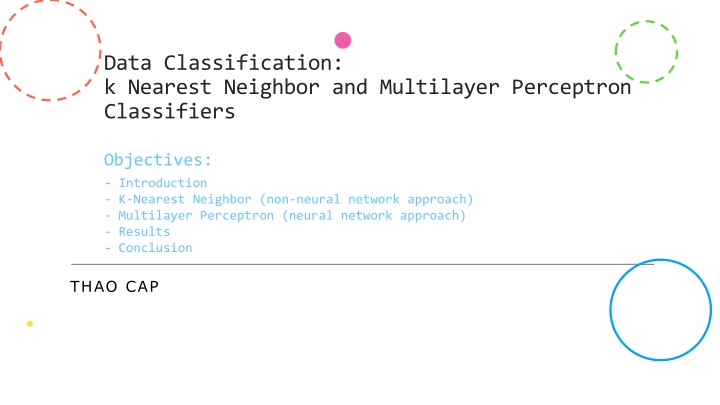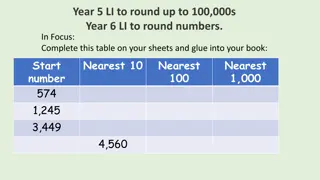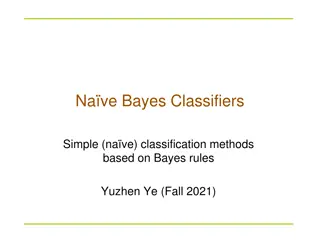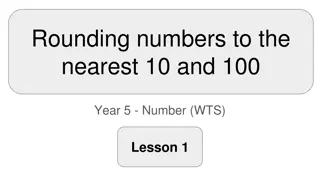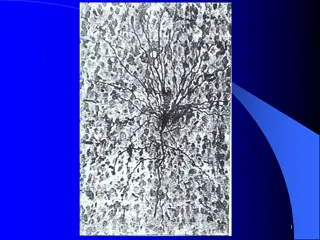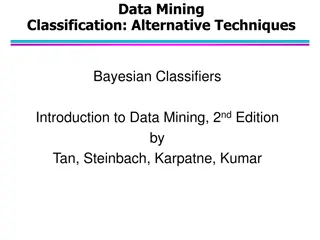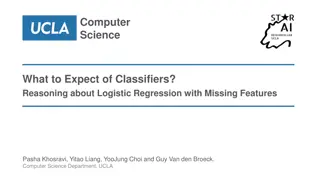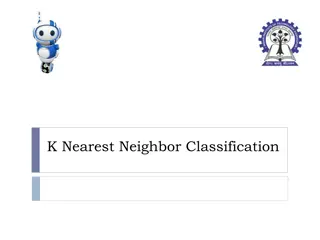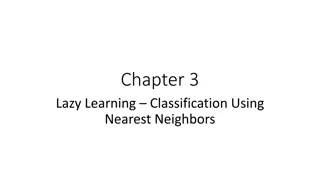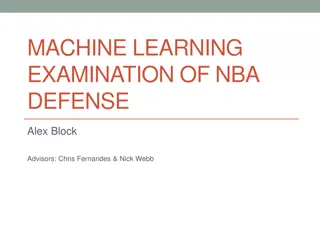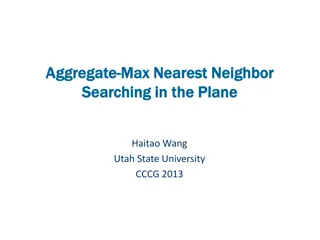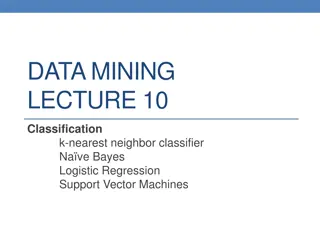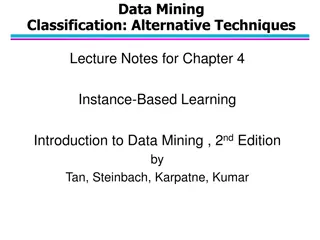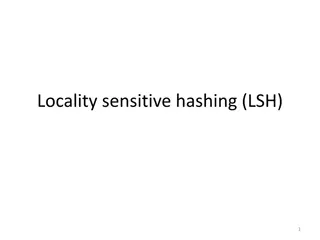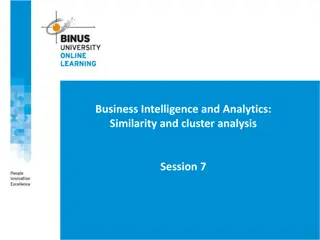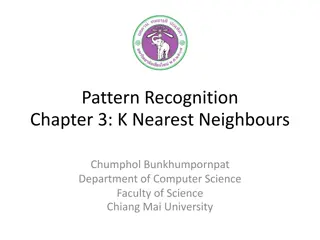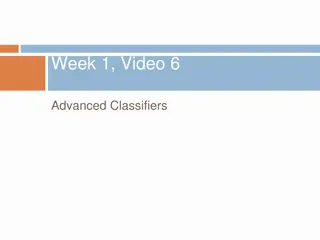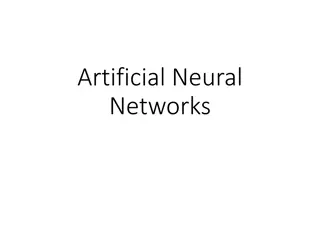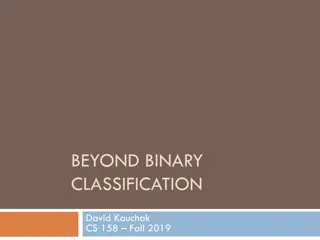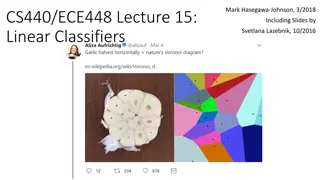Data Classification: K-Nearest Neighbor and Multilayer Perceptron Classifiers
This study explores the use of K-Nearest Neighbor (KNN) and Multilayer Perceptron (MLP) classifiers for data classification. The KNN algorithm estimates data point membership based on nearest neighbors, while MLP is a feedforward neural network with hidden layers. Parameter tuning and results analysis are provided for both approaches using a 2-dimensional dataset. The evaluation includes error rates and model performance on training, development, and evaluation data sets.
Download Presentation

Please find below an Image/Link to download the presentation.
The content on the website is provided AS IS for your information and personal use only. It may not be sold, licensed, or shared on other websites without obtaining consent from the author.If you encounter any issues during the download, it is possible that the publisher has removed the file from their server.
You are allowed to download the files provided on this website for personal or commercial use, subject to the condition that they are used lawfully. All files are the property of their respective owners.
The content on the website is provided AS IS for your information and personal use only. It may not be sold, licensed, or shared on other websites without obtaining consent from the author.
E N D
Presentation Transcript
Data Classification: k Nearest Neighbor and Multilayer Perceptron Classifiers Objectives: - Introduction - K-Nearest Neighbor (non-neural network approach) - Multilayer Perceptron (neural network approach) - Results - Conclusion THAO CAP
INTRODUCTION 2-dimensional dataset including training data, development data, and evaluation data Classify the data using 2 approaches: non- neural network approach and neural network approach Since our training and development data is relatively small and provided with labels, we choose supervised models to classify our data. Knn and MLP are chosen Figure 1: training data plot
K-NEAREST NEIGHBOR: ALGORITHM A k-nearest-neighbor algorithm, often abbreviated k-nn, is an approach to data classification that estimates how likely a data point is to be a member of one group or the other depending on what group the data points nearest to it are in A majority vote is used to assign which class.
K-NEAREST NEIGHBOR: TUNING Parameters: n_neighbors/k: Number of neighbors to use by default for kneighbors queries Weights {uniform, distance}: weight function used in prediction Algorithm {ball_tree, kd_tree, brute}: algorithm used to compute the nearest neighbors p {Manhattan, Euclidean}: power parameter for the Minkowski metric GridSearchCV is used to tune the model. It helps to loop through predefined hyperparameters and fit the estimator (model) Figure 2: Error rates vs k After finding error rate for k from range 1-200, we find k=108 has the smallest error rate on the training and development data.
K-NEAREST NEIGHBOR: RESULTS Train ref and train hyp plots TRAIN DEV EVAL 25.62% 25.39% 67.32% Table 1: KNN error rates on different data Dev ref and dev hyp plots Eval hyp plots
MULTILAYER PERCEPTRON: ALGORITHM Multi-layer Perceptron (MLP) is a class of feedforward artificial neural network. Hidden layers Multi-layer Perceptron (MLP) is a supervised learning algorithm that learns a function ? . = ?? ??by training on a dataset, where m is the number of dimensions for input and o is the number of dimensions for output. Input layer Output layer MLP consists of one input layer, one output layer, and one or more non-linear layers, called hidden layers.
MULTILAYER PERCEPTRON: TUNING Parameters: Hidden layer sizes: The ith elememnt represents the number of neurons in the ith hidden layer Activation: activation function for the hidden layer GridSearchCV is used to tune the model. Our optimal activation function is rectified linear unit function, returns f(x) = max(0,x). Optimal hidden layer size is (100, 100, 50)
MULTILAYER PERCEPTRON: RESULTS Train ref and train hyp plots TRAIN DEV EVAL 26.29% 26.35% 67.07% Table 1: MLP error rates on different data Dev ref and dev hyp plots Eval hyp plots
ANALYSIS TRAIN DEV EVAL KNN and MLP give similar performance. Generally, KNN performs slightly better on our training data and development data, whereas MLP gives a slightly smaller error rates on the eval data KNN 25.62% 25.39% 67.32% MLP 26.29% 26.35% 67.07% Table 3: Error rates for each method Because time is limited and Sklearn GridsearchCV requires long computing time, more parameters are not able to be tested (hidden layer sizes, learning rate)
